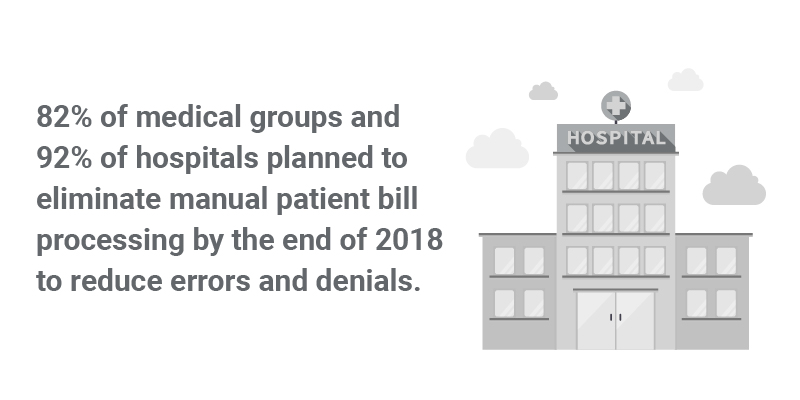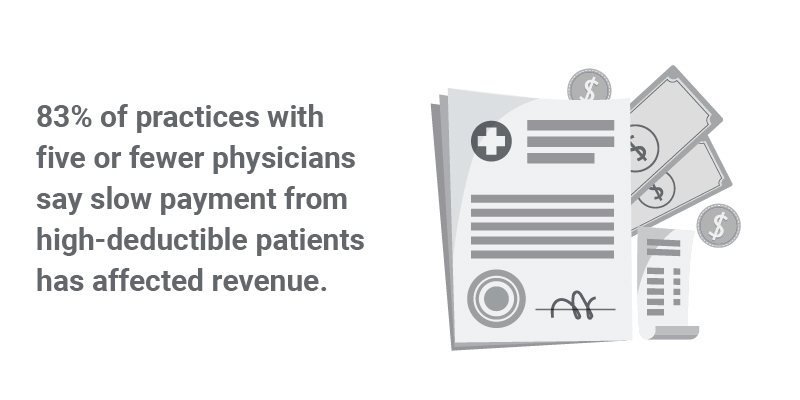The Benefits of Using Insurance Verification Software in the Healthcare Industry

What Is Insurance Verification Software?
Insurance verification software is a digital tool designed to automate and simplify insurance verification. It integrates with electronic health records (EHRs), billing software, and other healthcare IT systems to provide real-time access to patient insurance coverage information.
This information includes patient deductibles, co-payments, coinsurance, and other critical details that impact billing and reimbursement. Insurance verification is a critical component of healthcare revenue cycle management and ensures healthcare providers get paid accurately and timely.1
What are Insurance Verifications?: A Closer Look
The Importance of Insurance Verification in the Healthcare Industry
Insurance verification has become increasingly important as patients’ insurance coverage and benefits are complex and constantly changing.
Insurance verification helps healthcare providers to determine a patient’s insurance coverage and benefits, including co-pays, deductibles, and coinsurance, which help them to estimate the patient’s financial responsibility.
The Process of Insurance Verification
The verification process involves verifying the patient’s insurance policy number, effective date, coverage details, co-pays, and deductibles. The healthcare provider may need to follow up multiple times to get the necessary information.
Insurance Eligibility Verification: A Closer Look at the Software
Insurance verification software leverages multiple data sources to instantly verify patient insurance coverage using only a few identifiers to access insurance plan information, such as policy numbers, member IDs, and dates of birth.
Advantages of Using Insurance Verification Software
Insurance verification software automates and streamlines the insurance verification process.
The following are some of the benefits of using this type of verification software:
- Speed: It verifies a patient’s insurance coverage and benefits in real time, reducing the time and effort required by healthcare providers or their staff.
- Accuracy: It eliminates errors associated with manual processes, reducing the risk of claim denials and delayed payments.
- Cost savings: Healthcare providers save money by reducing labor costs associated with manual processes and minimizing claim denials.
- Enhanced patient experience: Accurate and up-to-date information about patients’ insurance coverage and financial responsibility, thus enhancing their overall experience with the healthcare provider.
Features of Insurance Verification Software
This software typically includes the following features:3
- Real-time verification: Insurance verification software should interface with insurance payers in real time, providing up-to-date information about a patient’s insurance coverage and benefits.
- Automated data entry: Another ability of insurance verification software should be to automatically enter patient information, reducing the risk of errors and saving time.
- Automated eligibility verification: The software should automatically verify patients’ eligibility based on their insurance coverage, including co-pays, deductibles, and coinsurance.
- Customizable rules engine: Healthcare providers should be able to customize rules for insurance verification based on their specific requirements.
- Integration with EHR/EMR systems: Insurance verification software should integrate with electronic health record (EHR) or electronic medical record (EMR) systems, streamlining the revenue cycle management process.
- Mobile optimization: The software should be optimized for mobile devices, making it easy for healthcare providers to access patient insurance coverage information from anywhere.
- HIPAA compliance: The software should meet HIPAA compliance standards for data privacy and security.
HIPAA Compliance: An Overview
How Does Insurance Verification Software Integrate with Other Healthcare IT Systems
Insurance verification software can be integrated with various healthcare IT systems to streamline the insurance verification process and reduce errors associated with manual data entry.
Here are some of the ways that insurance verifying software can integrate with other healthcare IT systems:
Electronic Health Record (EHR) Systems
Insurance verification software can be integrated with EHR systems to automatically retrieve patient demographic and insurance information.
This helps to ensure that the information is accurate and up-to-date and eliminates the need for healthcare providers to manually enter this information.
Practice Management Systems
Revenue Cycle Management (RCM) Systems
Insurance verifying software can be integrated with RCM systems to streamline the entire revenue cycle, from patient registration to claims submission and payment.
By automating the insurance verification process, RCM systems can reduce the time and resources required to manage the revenue cycle while improving accuracy.
Patient Portals
Insurance verifying software can be integrated with patient portals to give patients access to their insurance information, including coverage and benefits.
This helps improve transparency and communication between patients and healthcare providers while reducing the administrative burden associated with managing patient insurance information.

The Benefits of Using Software for Insurance Verification
Insurance verifying software offers several benefits to healthcare providers, including increased efficiency, reduced errors and denials, cost savings, and enhanced patient experience.3
Increased Efficiency in the Verification Process
One of the primary benefits of using insurance verifying software is increased efficiency in the verification process.
This verification software automates the verification process, significantly reduces the time and effort required to verify insurance and allows healthcare providers to focus on other critical tasks, such as patient care.
Reduction in Errors and Denials
Cost Savings for Healthcare Providers
Enhanced Patient Experience
More Benefits of Using Insurance Verifying Software
Improved Revenue Cycle Management
Fraud Prevention
Insurance verifying software can help to prevent fraudulent claims by verifying that the services provided are covered by the patient’s insurance plan. The software can also flag potentially fraudulent claims based on usage patterns or other fraud indicators.
Improved Documentation
Insurance verifying software can improve documentation by providing electronic records of insurance verification and eligibility checks. This can help to prevent errors and improve accuracy in billing and reimbursement.
Handles Complex Insurance Plans

Implementing Insurance Verification Software
Implementing insurance verifying software has numerous benefits for healthcare providers. However, implementing new software can be challenging. This section outlines the steps required to implement insurance verification software successfully.
Steps to Implementing Insurance Verifying Software
- Identify the need: The first step in implementing insurance verification software is identifying the need for the software. Determine the problems with the current verification process and identify the benefits of using the software.
- Research and choose the right insurance verification software: Consider the software’s features, functionality, compatibility with existing systems, and price.
- Plan the implementation: Plan the implementation of the software, including identifying the stakeholders involved, outlining the timeline, and creating a budget.
- Install and configure the software: Install and configure the software, including setting up user accounts, connecting to insurance payers, and customizing the software to meet the organization’s needs.
- Test the software: Test the software to ensure it meets the organization’s needs, is compatible with existing systems, and performs as expected.
- Train staff: Train staff on how to use the software, access patient information, verify insurance coverage and benefits, and submit claims.
- Monitor and evaluate: Monitor and evaluate the software’s performance, including identifying any issues or areas for improvement.
Choosing the Right Software
Choosing the right verification software is critical to a successful implementation. Healthcare providers should consider the software’s features, functionality, compatibility with existing systems, and price.4
Key Considerations
- Provides real-time access to patient insurance coverage and benefits
- Automates data entry to reduce errors
- Interfaces with insurance payers to provide real-time information
- Offers reporting and analytics to monitor performance and identify areas for improvement
- Provides integration with existing practice management and electronic health record systems
- Is user-friendly and easy to navigate
Training Staff
Training should be provided to all staff involved in the verification process, including front office staff, billing and coding staff, and medical assistants.

Future of Insurance Verification Software
Emerging Trends in Insurance Verification Software
Artificial Intelligence (AI) and Machine Learning (ML)
Artificial intelligence and machine learning technologies are being integrated into insurance verification software to improve accuracy and efficiency. For example, AI can automate the verification process, identify potential errors or issues, and even predict claim denials before they happen.5
Mobile Technology
As more healthcare providers move towards mobile solutions, insurance verifying software is being developed to support these platforms. Mobile applications can make it easier for patients to provide insurance information and for healthcare providers to verify it.
Blockchain Technology
Predictions for the Future of Insurance Verifying Software
What does the future of insurance verifying software look like? As technology becomes more advanced and effective, we will likely see information moving at faster speeds and greater access to health records, thus improving overall patient experiences in positive ways.
Here are some of these predictions:
Increased Automation
As AI and machine learning technologies evolve, insurance verification software will become more automated.
The verification process will become more efficient and accurate, with fewer errors and denials.
Greater Integration with Electronic Health Records (EHRs)
Improved Patient Experience
instantvob® – A Must-Have Insurance Verification Software for Healthcare Sector
instantvob® is a powerful tool for healthcare providers, drug rehab admissions staff, and revenue cycle management teams.
The software provides real-time access to verification of benefits and patient coverage information, streamlines the revenue cycle management process, and improves patient satisfaction.
Advantages of Using Instant Verification of Benefits
Faster Admissions and Treatment Decisions
With instantvob®, you can make fast and informed decisions on admissions for treatment and therapies.
The software provides real-time access to verification of benefits and patient coverage information, so you can quickly determine whether a patient is eligible for treatment and what their insurance will cover.
Improved Revenue Cycle Management
instantvob® streamlines the revenue cycle management process by reducing denials, increasing admissions, and ensuring insurance payments are received promptly. The software provides accurate reimbursement estimates to avoid overbilling or underbilling for services.
Increased Patient Satisfaction

More Benefits of instantvob® for Insurance Verification
What Else Can instantvob® Offer Me?
instantvob® offers security and easy-to-use technology to create peace of mind for both healthcare givers and their patients.
HIPAA Compliant
instantvob® is HIPAA compliant, which means that it meets the rigorous security and privacy standards required for handling patient information. You can trust that your patient’s data is safe and secure.
Cloud-Based and Mobile-First
Easy to Use
instantvob® is designed to be intuitive and user-friendly, so you can start using it right away without extensive training. The software only requires five patient identifiers to get started and does the rest of the work for you.
Tailored for Healthcare Providers
instantvob® is tailored specifically for healthcare providers, drug rehab admissions staff, and revenue cycle management teams. The software is designed to meet the unique needs of these professionals and helps them provide better care to their patients.
Reach out to learn more.
Resources
- https://www.insurgrid.com/blog/insurance-verification-software
- https://www.businessnewsdaily.com/16499-insurance-verification.html
- https://langate.com/what-do-you-need-to-know-to-develop-medical-insurance-verification-software/
- https://www.experian.com/blogs/healthcare/2023/02/4-benefits-of-health-insurance-eligibility-verification-software/#:~:text=The%20consequences%20of%20failing%20to,denied%20claims%20and%20delayed%20payments
- https://blogs.perficient.com/2017/10/03/how-ai-verifies-insurance-eligibility-to-benefit-members-plans/
- https://www.modernhealthcare.com/opinion-editorial/how-blockchain-could-ease-frustration-payment-process
Learn More About How instantvob® Can Help You Get the Most Out of Healthcare


